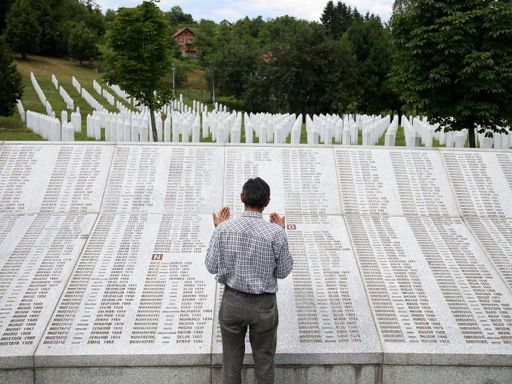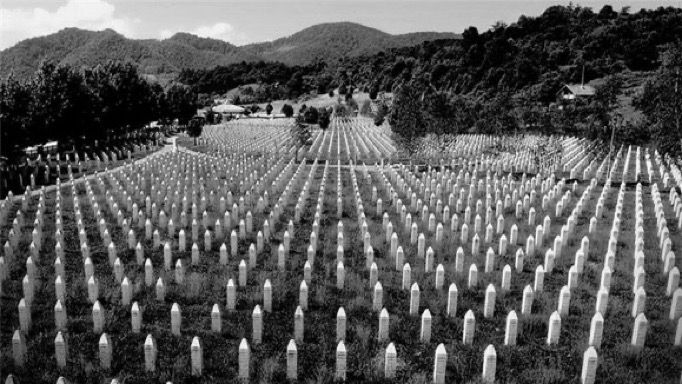The Srebrenica Massacre: A Cautionary Tale of International Silence
On July 11–16, 1995, in what both the International Criminal Tribunal for the former Yugoslavia (ICTY) and the International Court of Justice legally recognized as genocide, more than 8,000 Bosniak Muslim men and boys were systematically executed by Bosnian Serb forces near Srebrenica, Bosnia-Herzegovina
IN BRIEF
Thinkbrief
7/13/20253 min read


On July 11–16, 1995, in what both the International Criminal Tribunal for the former Yugoslavia (ICTY) and the International Court of Justice legally recognized as genocide, more than 8,000 Bosniak Muslim men and boys were systematically executed by Bosnian Serb forces near Srebrenica, Bosnia-Herzegovina. This atrocity remains the worst in Europe since World War II. Though the facts are judicially established, denial still festers among Bosnian Serb leaders. The question that persists: how did this occur under UN protection, and what lessons does it impose on us today?
Historical Background & Context
Srebrenica, a majority Bosniak town, was declared a UN-protected enclave during the Yugoslav conflict. From 1992 to 1995, it endured blockade and starvation tactics. On July 6, the Bosnian Serb Army launched “Operation Krivaja‑95.” When they captured the town on July 11, thousands of men and boys were forcibly separated from women and children, never to be seen again.
Brutality Unveiled
The killings were methodical. Victims were blindfolded, shot execution-style, and buried in mass graves. The Scorpions unit, which filmed parts of the massacre, provided irrefutable visual evidence later used in court. The ICTY concluded these acts constituted genocide—intentional destruction of part of an ethnic group.
The UN’s Failure
Despite its “safe area” designation, Srebrenica collapsed under the watch of 370 Dutch peacekeepers. Outgunned and under political pressure, they surrendered the people in their care. In 1999, UN Secretary-General Kofi Annan admitted the international community’s catastrophic failure. The Dutch government later accepted legal responsibility for not preventing at least 350 deaths.
Aftermath & Ongoing Impact
As of 2025, over 6,750 victims have been exhumed and buried in the Potočari Memorial Cemetery. More than 1,000 remain unaccounted for. Groups like Mothers of Srebrenica, led by the late Hatidža Mehmedović, continue to fight for justice and recognition. The grief is generational—many families have only partial remains to bury.
Challenges of Denial
Despite overwhelming evidence, denial remains entrenched. In April 2024, Bosnian Serb lawmakers adopted a report disputing the genocide classification. Politicians like Milorad Dodik acknowledge “a crime,” but reject the legal term genocide—undermining reconciliation and truth.
Why July 11 Matters
To ensure remembrance, the international community formally recognizes July 11 as Srebrenica Memorial Day. Each year, mass funerals are held for newly identified victims. Leaders and citizens gather in silence, reaffirming the global vow: “Never Again.” But remembrance must not be confined to Bosnia. July 11 should also be a global call to confront denial, prevent ethnic cleansing, and act when human rights are under threat.
Gaza: A Modern Parallel Too Close to Ignore
As we honor Srebrenica, the horror unfolding in Gaza demands similar moral clarity. Since October 2023, over 37,000 Palestinians, primarily civilians, have died amid Israel’s bombardments. Entire neighborhoods have been flattened, and hospitals destroyed. Gaza’s infrastructure has collapsed under siege conditions, and over 1.7 million people have been displaced.
In December 2023, South Africa filed a genocide case against Israel at the International Court of Justice, citing systematic acts designed to destroy the Palestinian population, in whole or in part. Several Israeli officials have made public statements suggesting a desire to make Gaza “uninhabitable”—language chillingly similar to that used by Bosnian Serb leaders in the 1990s.
Just as Srebrenica was encircled, isolated, and ethnically targeted, so too is Gaza today. The failure to intervene effectively echoes 1995. If Srebrenica was the international community’s silence, Gaza may be its sequel.
Conclusion
The Srebrenica genocide is more than a historical stain—it is a warning. July 11, now enshrined as Memorial Day, must inspire not only reflection but action. Genocide does not erupt in darkness—it brews in plain sight, fed by hatred and indifference. If the world truly believes in “Never Again,” it must reckon not only with past crimes but with unfolding ones. From the ashes of Srebrenica to the rubble of Gaza, the lesson is the same: denial kills, and silence enables.

